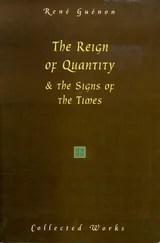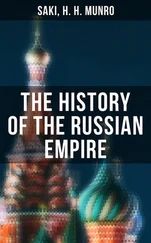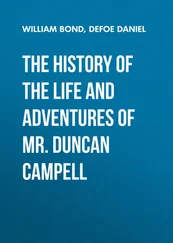[28] Palencia imputes his death to an attack of the quinsy. Corónica, MS., cap. 73.
[29] Rades y Andrada, Las Tres Ordenes, fol. 77.—Caro de Torres, Historia de las Ordenes Militares de Santiago, Calatrava, y Alcantara, (Madrid, 1629,) lib. 2, cap. 59.—Castillo, Crónica, cap. 85.—Alonso de Palencia, Corónica, MS., cap. 73.—Gaillard remarks on this event, "Chacun crut sur cette mort ce qu'il voulut." And again in a few pages after, speaking of Isabella, he says, "On remarqua que tons ceux qui pouvoient faire obstacle à la satisfaction ou à la fortune d'Isabelle, mouroient toujours à propos pour elle." (Rivalité, tom. iii. pp. 280, 286.) This ingenious writer is fond of seasoning his style with those piquant sarcasms, in which oftentimes more is meant than meets the ear, and which Voltaire rendered fashionable in history. I doubt, however, if, amid all the heats of controversy and faction, there is a single Spanish writer of that age, or indeed of any subsequent one, who has ventured to impute to the contrivance of Isabella any one of the fortunate coincidences, to which the author alludes.
[30] Lebrija, Rerum Gestarum Decades, lib. 1, cap. 2—Zurita, Anales, lib. 18, cap. 10—Castillo, Cronies, cap. 93, 97.—Alonso de Palencia, Corónica, MS., part. 1, cap 80.
[31] Alonso de Palencia, Corónica MS., cap. 82.
[32] Zuñiga, Anales de Sevilla, pp. 851, 352.—Carta del Levantamiento de Toledo, apud Castillo, Crónica, p. 109.—The historian of Seville has quoted an animated apostrophe addressed to the citizens by one of their number in this season of discord:
"Mezquina Sevilla en la sangre bañada de los tus fijos, i tus cavalleros, que fado enemigo te tiene minguada," etc.
The poem concludes with a summons to throw off the yoke of their oppressors:
"Despierta Sevilla e sacude el imperio,
que faze a tus nobles tanto vituperio."
See Anales, p. 359.
[33] "Quod in pace fore, sen natura, tune fatum et ira dei vocabatur;" says Tacitus, (Historiae, lib. 4, cap. 26,) adverting to a similar state of excitement.
[34] Saez quotes a MS. letter of a contemporary, exhibiting a frightful picture of these disorders. (Monedas de Enrique IV., p. 1, not.—Castillo, Crónica, cap. 83, 87, et passim.—Mariana, Hist. de España, tom. ii. p. 451.—Marina, Teoría, tom. ii. p. 487.—Alonso de Palencia, Corónica, MS., part. 1, cap. 69.) The active force kept on duty by the Hermandad amounted to 3000 horse. Ibid., cap. 89, 90.
[35] Alonso de Palencia, Corónica, MS., cap. 87, 92.—Castillo, Crónica, cap. 94.—Garibay, Compendio, lib. 17, cap. 20.
[36] Marina, Teoría, part. 2, cap. 88.
[37] Lebrija, Rerum Gestarum Decad., lib. 1, cap. 3.—Alonso de Palencia, Corónica, MS., part. 1, cap. 92.—Florez, Reynas Cathólicas, tom. ii. p. 790.
[38] Lebrija, Rerum Gestarum Decad., lib. 1, cap. 3.—Ferreras, Hist. d'Espagne, tom. vii. p. 218.-Alonso de Palencia, Corónica, part. 1, cap. 92.—part. 2, cap. 5.
[39] See a copy of the original compact cited at length by Marina, Teoría, Apend. no. 11.—Pulgar, Reyes Católicos, part. 1, cap. 2.
[40] So called from four bulls, sculptured in stone, discovered there, with Latin inscriptions thereon, indicating it to have been the site of one of Julius Caesar's victories during the civil war. (Estrada, Poblacion General de España, (Madrid, 1748,) tom. i. p. 306.)—Galindez de Carbaja, a contemporary, fixes the date of this convention in August. Apales del Rey Fernando el Católico, MS., año 1468.
[41] Alonso de Palencia, Corónica, MS., part. 2, cap. 4.—Castillo, Crónica, cap. 18.—Mariana, Hist. de España, tom. ii. pp. 461, 462.— Pulgar, Reyes Católicos, part. 1, cap. 2.—Castillo affirms that Henry, incensed by his sister's refusal of the king of Portugal, dissolved the cortes at Ocaña, before it had taken the oath of allegiance to her. (Crónica, cap. 127.) This assertion, however, is counterbalanced by the opposite one of Pulgar, a contemporary writer, like himself. (Reyes Católicos, cap. 5.) And as Ferdinand and Isabella, in a letter addressed, after their marriage, to Henry IV., transcribed also by Castillo, allude incidentally to such a recognition as to a well-known fact, the balance of testimony must be admitted to be in favor of it. See Castillo, Crónica, cap. 114.
[42] Isabella, who in a letter to Henry IV., dated Oct. 12th, 1469, adverts to these proposals of the English prince, as being under consideration at the time of the convention of Toros de Guisando, does not specify which of the brothers of Edward IV. was intended. (Castillo, Crónica, cap. 136.)
Mr. Turner, in his History of England during the Middle Ages, (London, 1825,) quotes part of the address delivered by the Spanish envoy to Richard III., in 1483, in which the orator speaks of "the unkindness, which his queen Isabella had conceived for Edward IV., for his refusal of her, and his taking instead to wife a widow of England." (Vol. iii. p. 274.) The old chronicler Hall, on the other hand, mentions, that it was currently reported, although he does not appear to credit it, that the earl of Warwick had been despatched into Spain in order to request the hand of the princess Isabella for his master Edward IV., in 1463. (See his Chronicle of England, (London, 1809,) pp. 263, 264.)—I find nothing in the Spanish accounts of that period, which throws any light on these obvious contradictions.
[43] The territories of France and Castile touched, indeed, on one point (Guipuscoa), but were separated along the whole remaining line of frontier by the kingdoms of Aragon and Navarre.
[44] Pulgar, Reyes Católicos, cap. 8.—Alonso de Palencia, Corónica, MS., part. 2, cap. 10.
[45] Isabella, in order to acquaint herself more intimately with the personal qualities of her respective suitors, had privately despatched her confidential chaplain, Alonso de Coca, to the courts of France and of Aragon, and his report on his return was altogether favorable to Ferdinand. The duke of Guienne he represented as "a feeble, effeminate prince, with limbs so emaciated as to be almost deformed, and with eyes so weak and watery as to incapacitate him for the ordinary exercises of chivalry. While Ferdinand, on the other hand, was possessed of a comely, symmetrical figure, a graceful demeanor, and a spirit that was up to anything;" mui dispuesto para toda coga que hacer ginsiese . It is not improbable that the queen of Aragon condescended to practise some of those agreeable arts on the worthy chaplain, which made so sensible an impression on the marquis of Villena.
[46] Alonso de Palencia, Corónica, MS., part. 2, cap. 5.
[47] See ante, note 10.
[48] Faria y Sousa, Europa Portuguesa, tom. ii. p. 391.—Castillo, Crónica, cap. 121, 127.—Alonso de Palencia, Corónica, MS., part. 2, cap. 7.—Lebrija, Rerum Gestarum Decad., lib. 1, cap. 7.
[49] Bernaldez, Reyes Católicos, MS., cap. 7.—Alonso de Palencia, Corónica, MS., part. 2, cap. 7.
[50] Pulgar, Claros Varones, tit. 2.
[51] L. Marineo, Cosas Memorables, fol. 154.—Zurita, Anales, tom. iv. fol. 162.—Alonso de Palencia, Corónica, MS., part. 2, cap. 7.—Pulgar, Reyes Católicos, cap. 9.
[52] Zurita, Anales, tom. iv. fol. 157, 163.
[53] See the copy of the original marriage contract, as it exists in the archives of Simancas, extracted in tom. vi. of Memorias de la Acad. de Hist., Apend. no. 1.—Zurita, Anales, lib. 18, cap. 21.—Ferreras, Hist. d'Espagne, tom. vii. p. 236.
[54] Alonso de Palencia, Corónica, MS., part. 2, cap. 12.—Castillo, Crónica, cap. 128, 131, 136.—Zurita, Anales, tom. iv. fol. 162.—Beatrice de Bobadilla and Mencia de la Torre, the two ladies most in her confidence, had escaped to the neighboring town of Coca.
[55] Castillo, Crónica, cap. 136.—Alonso de Palencia, Corónica, MS., part. 2, cap. 12.—Carbajal, Anales, MS., año 69.
Читать дальше












